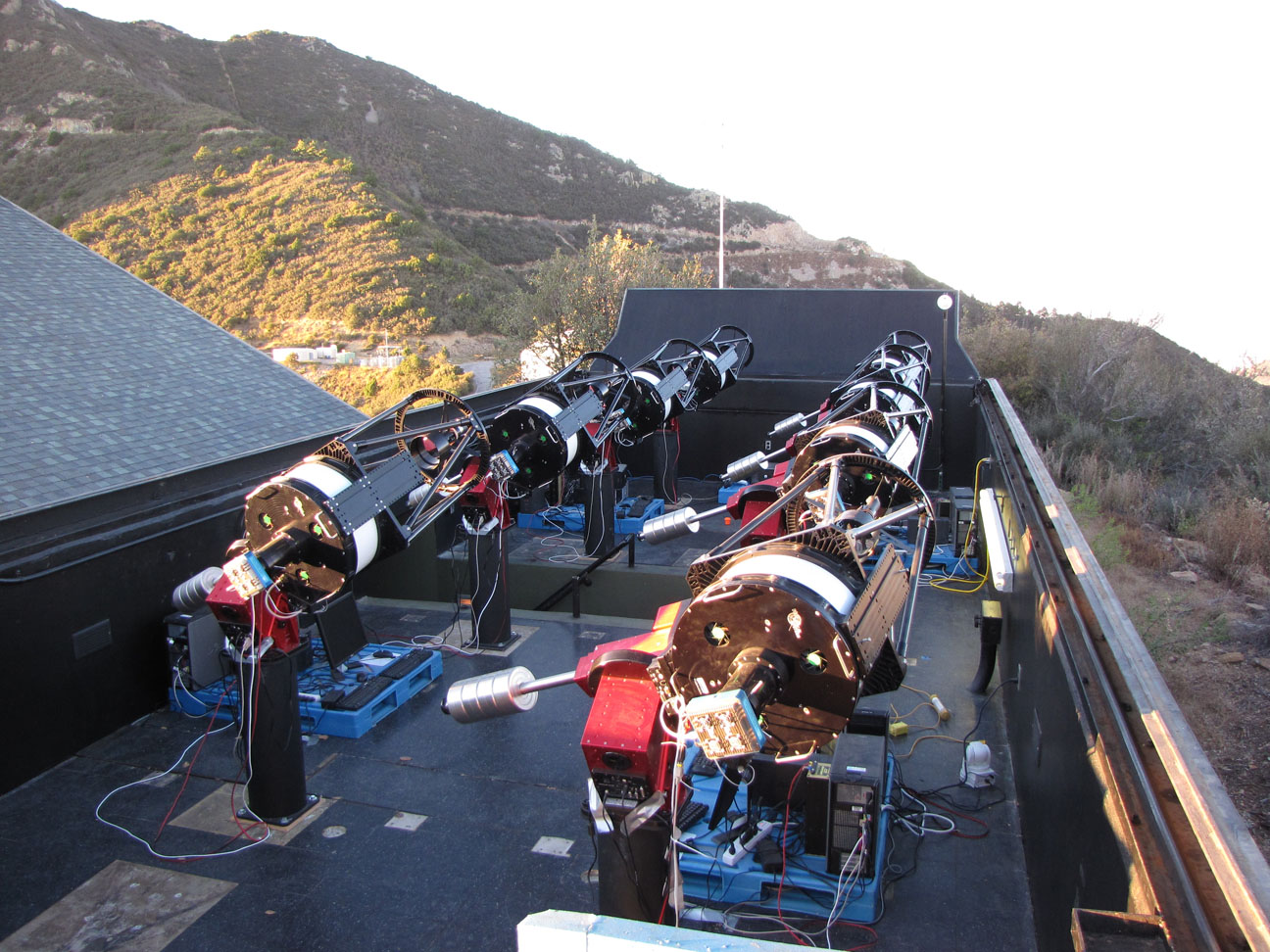Image List
-

This artist's conception shows the newly discovered super-Earth GJ 1214b, which orbits a red dwarf star 40 light-years from our Earth. It was discovered by the MEarth project - a small fleet of ground-based telescopes no larger than those many amateur astronomers have in their backyards.
David A. Aguilar, CfA -

The super-Earth GJ 1214b, which has 6.5 times the mass of our Earth, orbits its star once every 38 hours at a distance of only 1.3 million miles. Astronomers estimate the planet¬πs temperature to be about 400 degrees Fahrenheit. Although warm as an oven, it is still cooler than any other known transiting planet because it orbits a very dim star. Since GJ1214b crosses in front of its star, astronomers were able to measure its radius, which is about 2.7 times that of Earth. This makes GJ1214b one of the two smallest transiting worlds astronomers have discovered to date.
David A. Aguilar, CfA -

The MEarth (pronounced "mirth") Project is an array of eight identical 16-inch-diameter RC Optical Systems telescopes that monitor a pre-selected list of 2,000 red dwarf stars. Each telescope perches on a highly accurate Software Bisque Paramount and funnels light to an Apogee U42 charge-coupled device (CCD) chip, which many amateurs also use.
Dan Brocious, CfA -

The MEarth (pronounced "mirth") Project is an array of eight identical 16-inch-diameter RC Optical Systems telescopes that monitor a pre-selected list of 2,000 red dwarf stars. Each telescope perches on a highly accurate Software Bisque Paramount and funnels light to an Apogee U42 charge-coupled device (CCD) chip, which many amateurs also use.
Dan Brocious, CfA